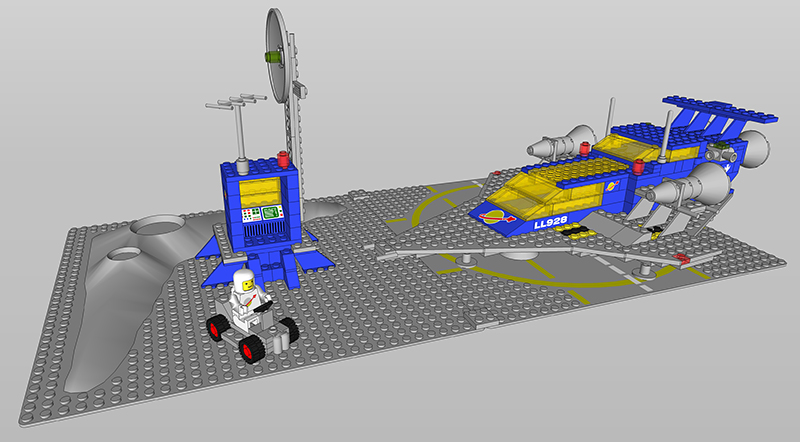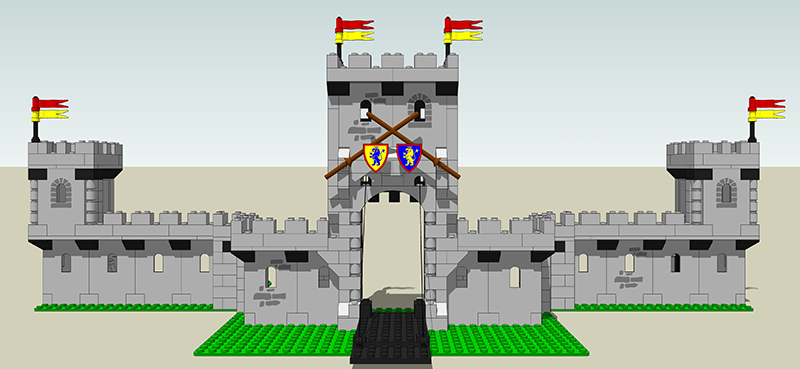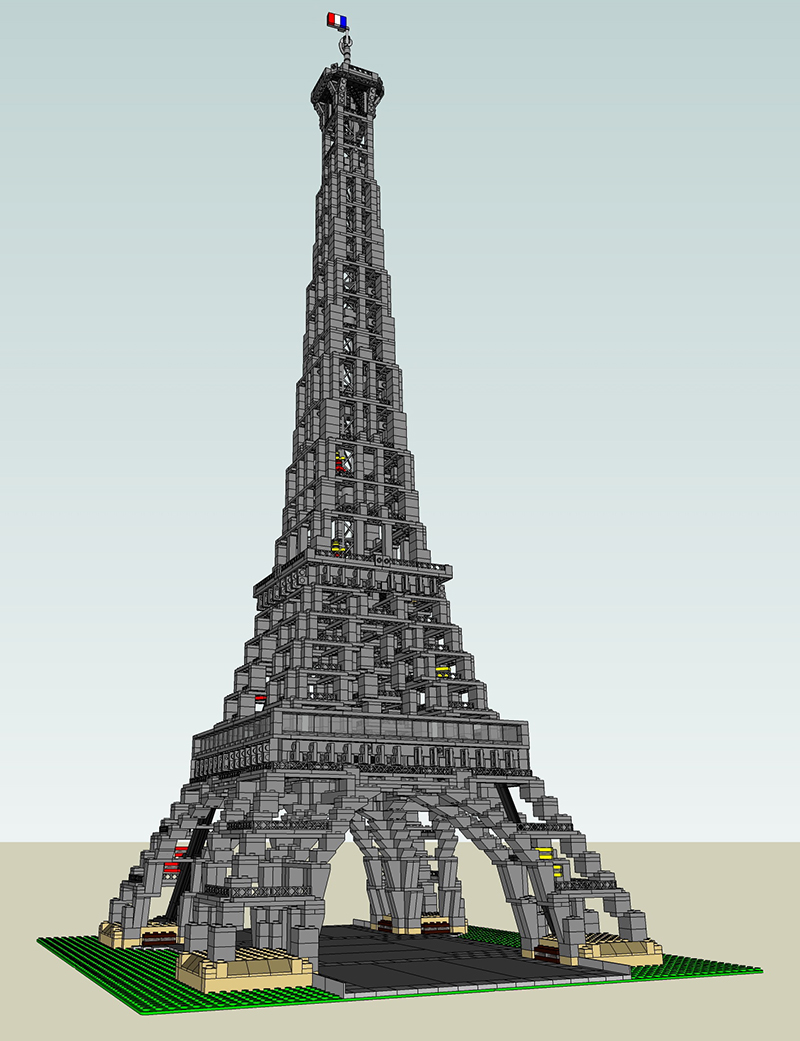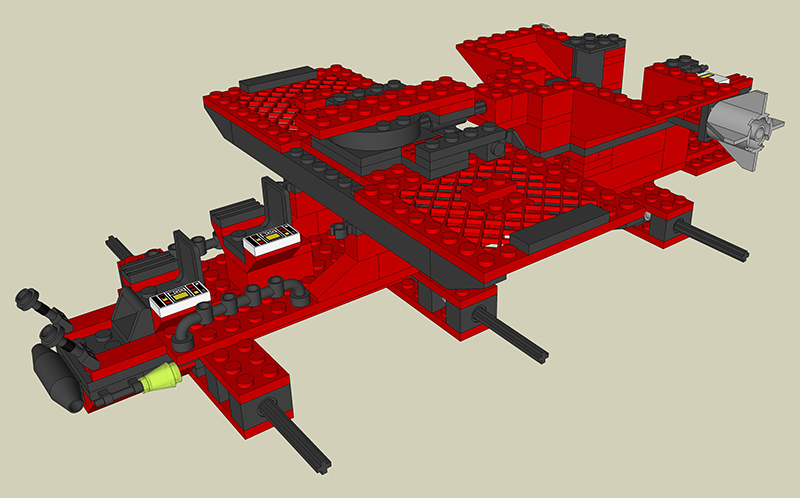Author : Andrew Alexander
Re-living My Childhood Through SketchUp
When anyone asks me, “What is SketchUp?” I always reply “It’s a 3D visualization tool”. The full truth, however, is that SketchUp is whatever you want it to be. The beauty of SketchUp is that it’s simple enough to learn quickly, yet powerful enough to realize nearly anything you can think of. Out of the box (meaning without using any of the thousands of plugins) it is what a blank piece of paper is to an artist; It’s a blank canvas. To the Architect, it can communicate a daring design to a client. To an Engineer, it can make a complicated steel connection easier to understand. To a game designer, it allows fast creation of new ideas for a level.
In my own career, I’ve used it primarily as a visualization tool for new construction sites. These are always photographs taken of an existing building or site, to which I add the new construction that’s modelled in SketchUp and it is all composited in Photoshop.
Lately, though, I’ve been more interested in the act of modelling itself, more than the final product. And as such, I’ve combined my love of SketchUp with my love of Lego.
It all started when I downloaded several 3D Lego modelling programs available for free on the web. I built several models with them, but I was not happy with the selection of pieces, and even less happy with the modelling interface. It was clunky, slow, and lacked intuition. In addition to that, the final models were a proprietary file format, so there was a limitation on what I could do with the models once they were created.
I then thought that SketchUp would be a perfect solution, since I was very familiar with modelling with it. This meant, however, that every piece I used had to be modelled individually. I initially went to the internet to find models of Lego pieces that other people had made, but I was not satisfied with the quality and accuracy of what I found. So I decided that what I needed to do is to make all my own pieces from scratch.

The first few pieces I made, using dimensions I found online, took a while to create. I made a simple model, more as a proof of concept and was happy with the way it turned out. As I made more pieces, I found that it got quicker and quicker because I could use elements of previous pieces I’d made to make to ones without having to always create from scratch. I found I could use peeron.com to get inventories of Lego sets, and brickfactory.com to find scanned instructions of many Lego sets.
So now that I had my Lego building procedure in place, it was time to tackle something a bit more complicated:

It was a resounding success!

So I did another:

And another:

And still another:

I even tackled the Eiffel Tower, which was, by far, the largest and most complicated Lego SketchUp model I’ve done so far:

I’m currently working on an M-Tron Lego set that I’ve always wanted as a kid, and I know I’m getting almost as much joy out of modelling it as I would have with the actual Lego. Also, this way I don’t have to explain to my wife why we suddenly have Lego sets all over the house!

Unfortunately, I can’t share these models in the 3D warehouse, because the upload size limit is 20MB, and these models are between 25 and 50MB each. I know I could streamline the parts, (currently the little Lego knobs have 12 sides which is way overkill for something that small) but I never really intended to share them in the first place. I’ve learned that if there are two things that you enjoy, then the combination of those two things must be twice as good. Those two things for me are Lego, and SketchUp!
To date, I’ve modelled over 260 pieces, and my next goal is to model every classic space Lego set from the 70’s and 80’s. I’ve always wanted to own them all as a kid, and now thanks to SketchUp, and can enjoy something that I had dreamed about: Having access to an unlimited supply of all the Lego ever made. Sure, it’s only in the digital sense, but it’s still very enjoyable!
There are 86 sets in the Classic Space inventory, and I have modelled one so far. only 85 to go!
- Cover Story
-
 SketchUp Can Help You Win Interior..
SketchUp Can Help You Win Interior.. -
 Best Laptops for SketchUp
Best Laptops for SketchUp -
 How to Resize Textures and Materials..
How to Resize Textures and Materials.. -
 Discovering SketchUp 2020
Discovering SketchUp 2020 -
 Line Rendering with SketchUp and VRay
Line Rendering with SketchUp and VRay -
 Pushing The Boundary with architectural
Pushing The Boundary with architectural -
 Trimble Visiting Professionals Program
Trimble Visiting Professionals Program -
 Diagonal Tile Planning in SketchUp
Diagonal Tile Planning in SketchUp -
 Highlights of some amazing 3D Printed
Highlights of some amazing 3D Printed -
 Review of a new SketchUp Guide
Review of a new SketchUp Guide
- Sketchup Resources
-
 SKP for iphone/ipad
SKP for iphone/ipad -
 SKP for terrain modeling
SKP for terrain modeling -
 Pool Water In Vray Sketchup
Pool Water In Vray Sketchup -
 Rendering Optimization In Vray Sketchup
Rendering Optimization In Vray Sketchup -
 Background Modification In sketchup
Background Modification In sketchup -
 Grass Making with sketchup fur plugin
Grass Making with sketchup fur plugin -
 Landscape designing in Sketchup
Landscape designing in Sketchup -
 Apply styles with sketchup
Apply styles with sketchup -
 Bedroom Making with sketchup
Bedroom Making with sketchup -
 Review of Rendering Software
Review of Rendering Software -
 Enhancing rendering for 3d modeling
Enhancing rendering for 3d modeling -
 The combination of sketchup
The combination of sketchup -
 Exterior Night Scene rendering with vray
Exterior Night Scene rendering with vray






